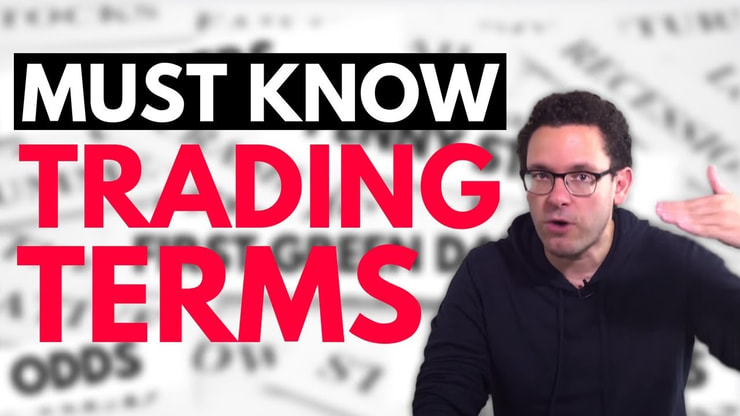My trading challenge students are SO dedicated to learning, every now and then they go above and beyond the homework I assign them and they create their own homework! Check out this very comprehensive basic stock market terminology project one of my favorite students sent me the other day:
There are many trading terms floating around on financial websites that many people do not truly understand, so I decided to write post going over some of the most important ones that everyone should know.
First, let’s focus on the fundamental trading terms.
1. Buy means that you are buying shares in a stock. When you buy a stock, you want the price to increase. With current technology, you will not get a stock certificate in that mail. Your broker will keep track of this for you.
2. Sell means that you are selling shares in a stock. When you sell, you are either closing a long position or opening a short position (see next term). Again, you will not have a certificate that you have to mail to someone, brokers keeps track of this electronically.
3. Short sell means that you are selling shares that you do not currently own. When you short sell a stock, you want the price to decrease. To short sell you need to borrow the shares from your broker.
4. Buy to cover means that you are closing out your short position by buying the shares. You make money when you sell the shares at a high price and buy them back at a lower price. For example, if you short sell 1000 shares of company ABC at $12 and buy to cover at $11, you would have a profit of $1000.
Next, let’s look at some key terms regarding the companies themselves.
5. Revenues are simply the money received by a company for selling their products/services. Consistent revenue growth is a bullish sign for a company, since companies want enough revenue to pay expenses and then expand their business.
6. Profits/Losses are the positive or negative gain from the operations after expenses. This number is obtained by the equation “revenues – expenses.” For example, say company ABC has revenues of $500,000 and expenses of $260,000. The profit would be $240,000. Example number 2, if company ABC has earning of $500,000 but expenses of $600,000, there would be a loss of $100,000.
7. Earnings per Share or EPS, is the profit (loss) divided by the number of shares outstanding. So say company ABC has a profit of $500,000 and 1,000,000 shares outstanding, this would be $0.50 Earnings per Share.
8. Price to Earnings Ratio or P/E ratio is the price of a stock divided by earnings per share (EPS). Say company ABC was priced at $10 a share when it reported EPS of $0.50 this would imply a P/E ratio of 20. In Tim’s opinion, this term is used too often to determine how expensive a stock is.
Finally, let’s go over some technical terms.
9. Moving averages are the average prices of a stocks over a given time period. For example, a 10 day moving average would be calculated by adding the closing prices of a stock for the last 10 days and dividing the sum by 10.
10. Resistance is a stocks price where sellers often emerge, thus preventing a price increase. When a stock breaks through resistance, this is typically a good time to buy.
11. Support is a stock’s price where buyers emerge, thus preventing a price decrease. When a stock breaks through support, look out below.
12. Breakouts/Breakdowns are moves across key resistance or support. This is arguably the most important term for those interested in trading penny stocks!!!
13. Market valuation is the number of shares outstanding multiplied by the stock price. For example, company ABC has 1,000,000 shares outstanding and a stock price of $10 a share, resulting in a $10,000,000 market valuation.
14. Shares outstanding are simply the number of shares issued by the company. Companies can issue or repurchase shares after their initial offering. Just because company ABC has 500,000 shares outstanding, doesn’t mean that they will always have that amount. They could repurchase 50,000 and thus have 450,000 shares outstanding. Or they could issue 50,000 more shares and have 550,000 shares outstanding. Not all of the shares are available for the average investor to trade.
15. Float is the number of shares that are publicly owned and available for trading. This number does not include the shares held by insiders. This is the number of shares that average investors are able to buy and sell.
16. Restricted shares are the shares held by insiders. These are included in the number of shares outstanding, but not the float. These shares are not available to public investors to buy and sell.
17. Unrestricted shares are shares freely tradable. These are the shares that are available for public investors to buy and sell.



Leave a reply